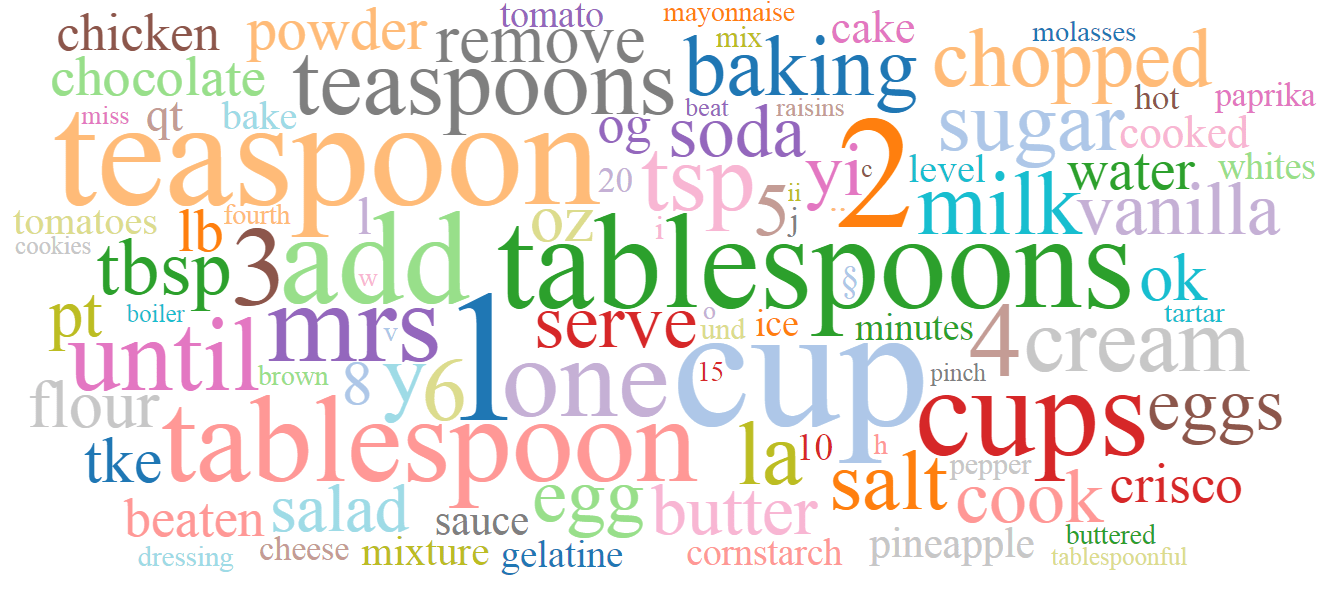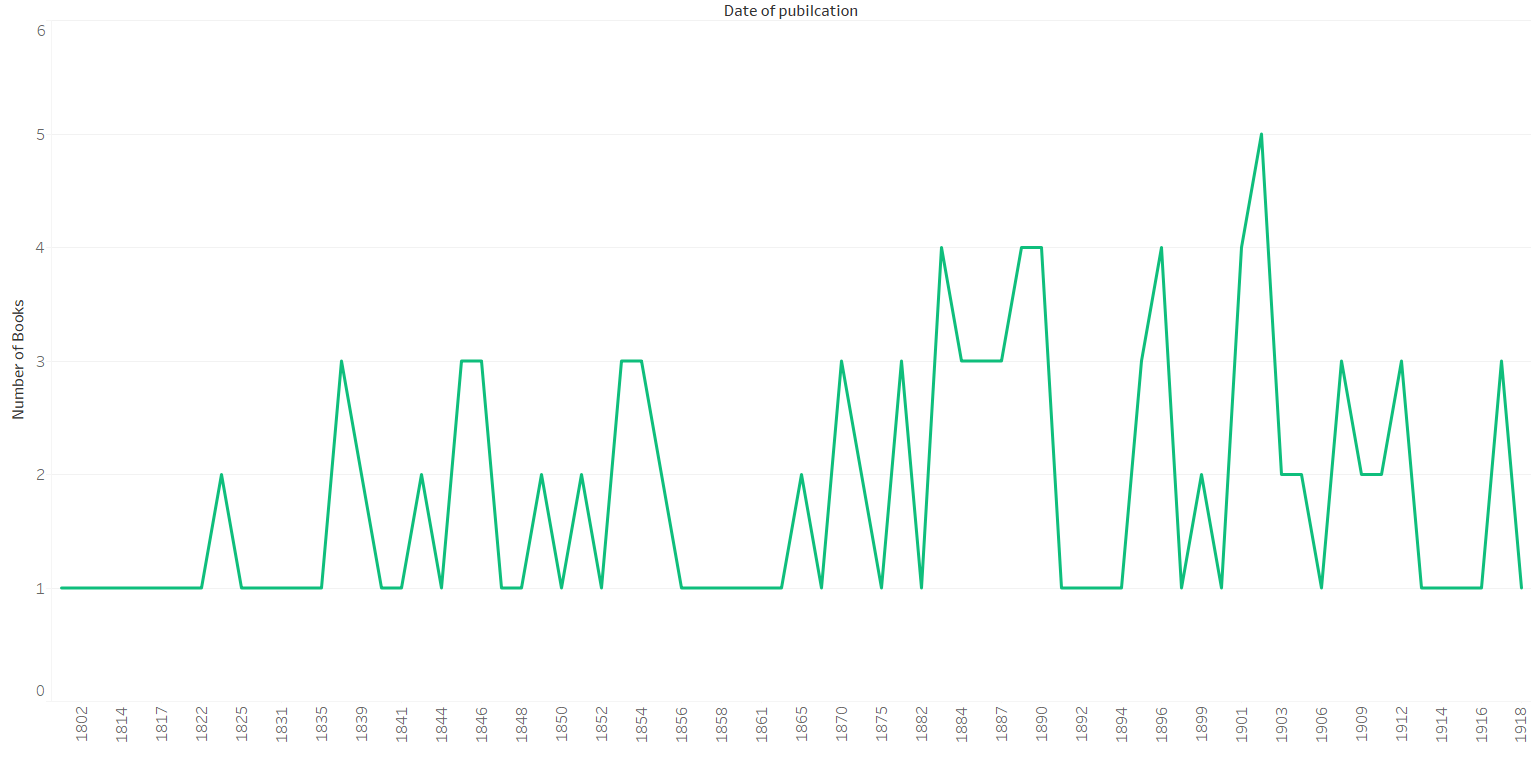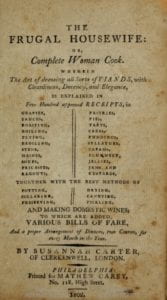A text analysis comparison between the texts cookbooks containing the word “frugal” and the full Early American Cookbooks set shows some interesting differences. The “frugal” books have over-represented terms which feature everyday words such as them, that, good, not, should, your etc which have no obvious connection to cooking. The under-represented terms feature kitchen measurement terms such as teaspoons and also names of ingredients, notably some more luxurious items such as chicken, chocolate, cake, butter, and pineapple. While it is not possible to form definitive conclusions, it seems clear that the frugal books emphasize ordinary language (perhaps directed toward expenditure and lifestyle choices with a healthy dose of “should” and “not”?) and do not offer a wealth of different ingredient names.


This visualization was created by comparing two sets of texts, cookbooks containing the word “frugal” and the full Early American Cookbooks set, using the Meandre Dunning Log-likelihood to Tagcloud algorithm in the HathiTrust Research Center Portal.



 Frugality has a long history in America.
Frugality has a long history in America.